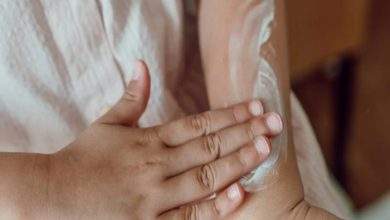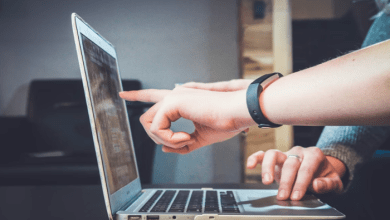
Varicose veins can be more than just a cosmetic concern—they often bring discomfort, pain, and secondary health issues that can affect our daily lives. Understanding the treatment options available empowers us to take control of our vein health and find meaningful relief.
Whether we’re considering simple lifestyle adjustments or exploring medical procedures, knowing where to turn is essential. For those seeking professional care, a vein clinic in Clear Lake can offer personalized evaluations and advanced treatment solutions tailored to our needs.
In this text, we’ll walk through various methods—from home remedies to clinical interventions—designed to ease discomfort, improve circulation, and help us reclaim comfort and mobility. Together, we’ll explore the best steps toward healthier, pain-free legs.
Understanding Varicose Veins
Varicose veins are swollen, twisted veins that often appear blue or dark purple. These veins are most commonly found in the legs, where the pressure from standing and walking can cause them to enlarge.
Causes and Symptoms
Several factors contribute to the development of varicose veins. Genetics plays a significant role: if our family has a history of these veins, we are at a higher risk. Other causes include age, hormonal changes, pregnancy, obesity, sitting or standing for long durations, and certain conditions that strain the veins, like heavy lifting.
Symptoms of varicose veins can range from mild to severe, often including:
Aching or heavy feeling in the legs
Swelling in the legs or ankles
Muscle cramping
Itching around one or more of the veins
Skin changes or ulcers near the affected veins
Diagnosis of Varicose Veins
To diagnose varicose veins, we can begin with a careful physical examination and review of our medical history. Our doctor may use imaging tests, such as ultrasound, to assess blood flow in the veins and determine the severity of the condition. This information is crucial for tailoring an effective treatment plan.Patients with more complex lower-limb concerns may benefit from consulting a foot and ankle specialist, such as those at Park Orthopaedics, who can provide comprehensive evaluation and guidance for vein-related issues.
Home Remedies for Pain Relief
Before we consider medical interventions, there are several home remedies that can provide relief from the discomfort of varicose veins.
Lifestyle Modifications
Implementing lifestyle changes can have a significant impact on our vein health. Here are some practical modifications:
Regular Exercise: Engaging in physical activities such as walking, cycling, or swimming can improve circulation and help control weight.
Dietary Changes: A diet high in fiber and low in salt can help reduce bloating and improve overall vein health. Foods rich in antioxidants, such as berries, spinach, and nuts, are especially beneficial.
Weight Management: Reducing excess weight can alleviate pressure on our veins, eventually reducing symptoms.
Elevating Legs: Regularly elevating our legs can help reduce swelling and improve blood circulation.
Compression Therapy
Compression stockings are a widely recommended solution for managing varicose veins. These stockings apply graduated pressure to the legs, promoting better blood flow and reducing swelling. They come in various levels of compression, and we should consult with a healthcare provider to determine which type is best suited for our needs.
Medical Treatments
If home remedies don’t provide sufficient relief, several medical treatments can effectively reduce pain and discomfort associated with varicose veins.
Sclerotherapy
Sclerotherapy involves injecting a special solution directly into the affected vein. This solution causes the vein to collapse and fade from view, effectively relieving symptoms. The procedure usually takes 15–30 minutes, and we can often return to daily activities immediately afterward.
Laser Therapy
Laser therapy uses focused light energy to target and treat varicose veins. As a minimally invasive procedure, it can effectively close off smaller veins without the need for incisions. The treatment times vary, but most patients see significant improvement with minimal downtime.
Vein Stripping and Ligation
This traditional surgical method involves removing large varicose veins through small incisions. While effective, stripping and ligation are generally considered for severe cases. Recovery might take longer than non-invasive options, and we should discuss potential benefits and risks with our doctor.
Endovenous Thermal Ablation
In this procedure, a thin tube is inserted into the affected vein where heat is applied either through laser energy or radiofrequency. This method seals the vein, causing it to collapse and be reabsorbed by the body over time. Endovenous thermal ablation is known for its high success rate and relatively quick recovery.
Post-Treatment Care and Recovery
After undergoing treatment for varicose veins, proper care is essential for optimal recovery.
Potential Risks and Side Effects
While most treatments for varicose veins are safe, like any medical procedure, there can be risks. Common side effects include:
Swelling or bruising around the treatment site
Skin discoloration
Nerve damage (rare but possible)
Infection (more common after surgical methods)
Following our doctor’s post-treatment care recommendations can help minimize these risks. This might include wearing compression garments, limiting physical activity for a short period, and scheduling follow-up appointments to monitor our recovery.
When To Consult a Doctor
If we notice symptoms that interfere with our daily lives, or if varicose veins are causing significant pain or discomfort, it may be time to consult a healthcare professional. Seeking medical advice can help us understand the severity of our condition and explore treatment options tailored to our specific needs. Early intervention can prevent complications and improve our quality of life.
Conclusion
Varicose veins can be a source of discomfort, but numerous options exist to alleviate the pain and improve our quality of life. From simple lifestyle changes and home remedies to advanced medical treatments, we have the power to take charge of our vein health. If home options fail to provide relief, we should not hesitate to consult a doctor. Taking proactive steps can lead to effective pain management and enhance our overall wellbeing.




